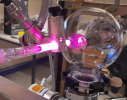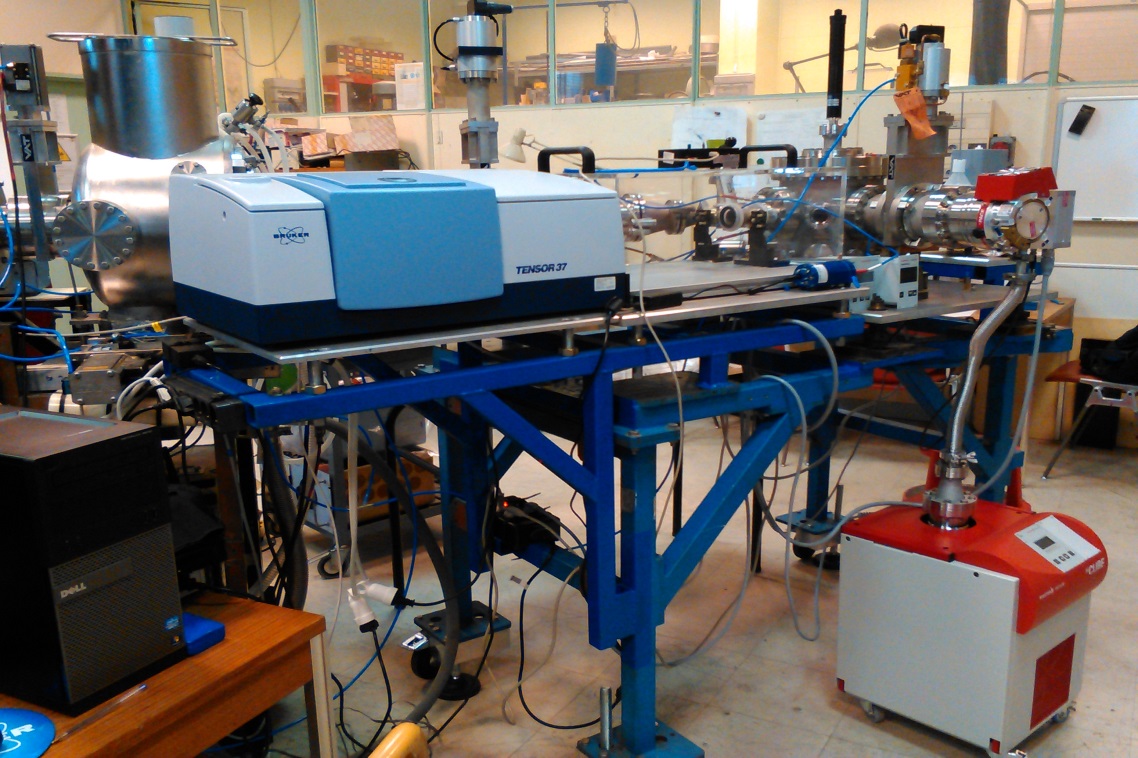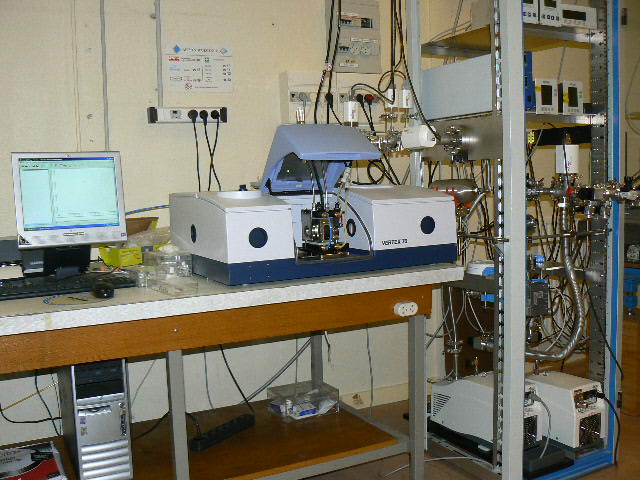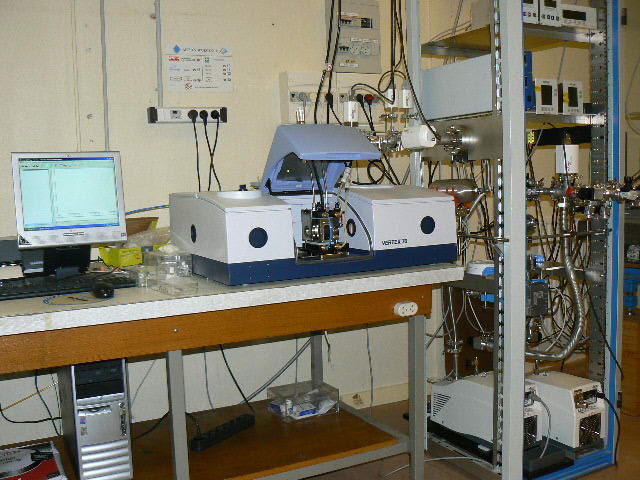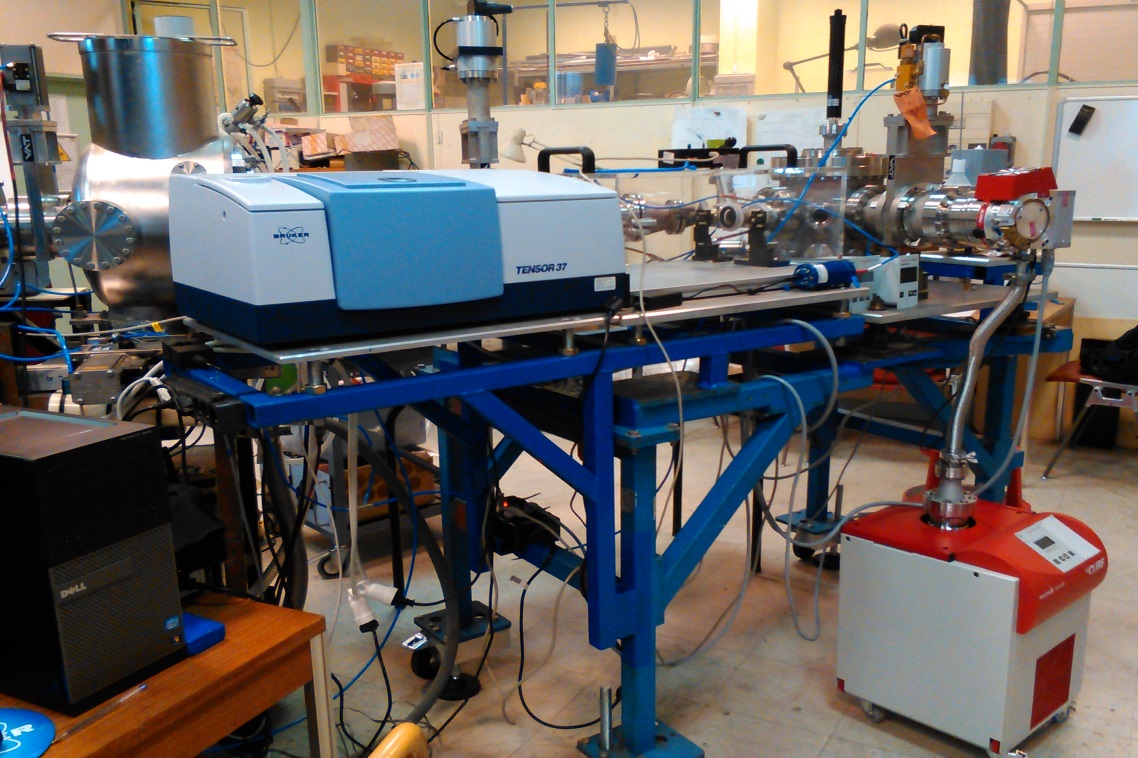The system is associated with a mixing line and a pumping system. This makes it possible to control the composition of the initial gas mixture sent into the reactor and maintained at low pressure. The plasma that forms in the reactor is induced and maintained by a microwave discharge coupled with an Evenson cavity. The device is such that part of the solid organic matter produced is deposited in the form of a thin film directly on an ad hoc support, facilitating subsequent characterizations, particularly by infrared.
Contact : Donia Baklouti
